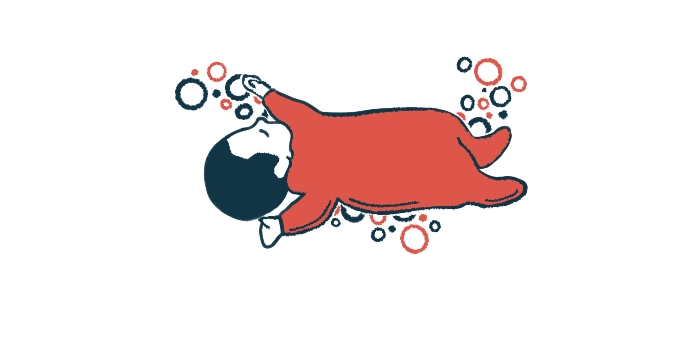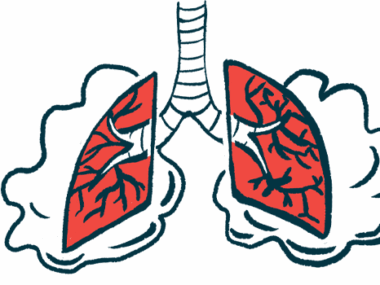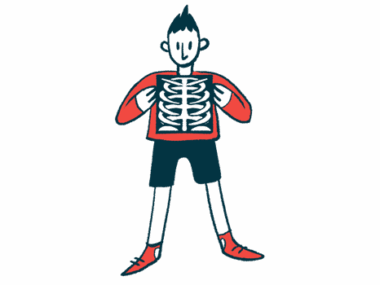Spinraza, physical therapy improve motor skills in boy with SMA type 0
Boy could sit without support at age 2, stand with support when he was 3
Written by |

Treatment with Spinraza (nusinersen) and physical therapy that focused on posture improved motor skills in a young boy with spinal muscular atrophy (SMA) type 0 and prevented the progression of scoliosis.
That’s according to a case report in Japan that demonstrated the boy was able to sit without support for short periods at age 2 and could stand with support when he was 3. The treatment goals at his most recent evaluation were to help him stand alone and walk with support.
“Our rehabilitation program does not require any special techniques or devices, which may be beneficial for establishing a widely applicable rehabilitation method for preventing such early-onset scoliosis,” the researchers wrote. ”Frequent physical therapy was one of the key components of our rehabilitation program.” The study, “A case of spinal muscular atrophy type 0 treated with nusinersen without progression of early-onset scoliosis – possibility of preventing scoliosis with a rehabilitation program focusing on postural management,” was published in Brain and Development.
SMA is mainly caused by mutations in the SMN1 gene that result in little or no survival motor neuron (SMN) protein being produced. The protein is important for the survival and function of the nerve cells, called motor neurons, that control voluntary movement, and the lack of it results in the progressive loss of these neurons along with symptoms like muscle weakness and wasting. SMA patients may also develop scoliosis, which may occur before age 2.
Treatment with Spinraza
The boy had severe muscle weakness, low muscle tone, breathing issues, and joint contractures, which are stiff, shortened joints that cause a deformity, immediately after he was born. At 25 days, he needed invasive breathing support with a ventilator due to aspiration pneumonia, a lung infection caused by inhaling something other than air.
A genetic analysis revealed a complete absence of both SMN1 gene copies, with two copies of the SMN2 gene, leading to a diagnosis of SMA type 0, the rarest and most severe form of the disease where symptoms appear before birth. SMN2 is a backup gene that produces about 10% of functional SMN. More copies of it are usually associated with lower disease severity.
The boy started Spinraza and physical therapy when he was 10 weeks old, which slowly improved his motor function. When he was 4 months old, he required feeding through a nasogastric tube due to difficulty swallowing along with a tracheostomy, which is a surgical opening in the neck to help with breathing. The boy was discharged at 9 months after his breathing stabilized.
Physical therapy included training at the center or home with rehabilitation staff at least twice a week. Sitting training was started at 1 year as the boy showed improvements in trunk and limb strength, and his head control soon became stable, prompting the start of standing training.
An X-ray revealed mild scoliosis, along with thoracic hyperkyphosis, a bending forward of the upper back, and lumbar hyperlordosis, where there is an exaggerated inward curve of the lower back. A seating system for managing his posture was used since the boy was 1.5 years old and a supine stander since he was almost 2.
Both sitting and standing training were done in the presence of a physical therapist. Sitting training without the sitting system at home was done for up to 30 minutes. At age 2, the boy could sit without support for short periods.
A supine stander is meant to provide support with a patient upright with the face and torso facing up. The tilting angle was gradually increased into an upright position, as the patient’s muscle strength improved. At 3 years and 8 months, the boy could stand with support for short periods.
When the boy was 6, spinal deformities that had been seen earlier hadn’t progressed or had eased. He was able to be taken off the ventilator a couple of hours a day.
“Now, at the age of 6 years, the nusinersen [Spinraza] treatment and rehabilitation aimed at helping him to stand alone and walk with support are continuing,” the investigators wrote. “Our case suggests that early proactive, nonsurgical management with targeted rehabilitation can prevent scoliosis progression in SMA patients with 2 copies of SMN2 that receive post-onset [disease modifying treatment] within six months of birth.”







